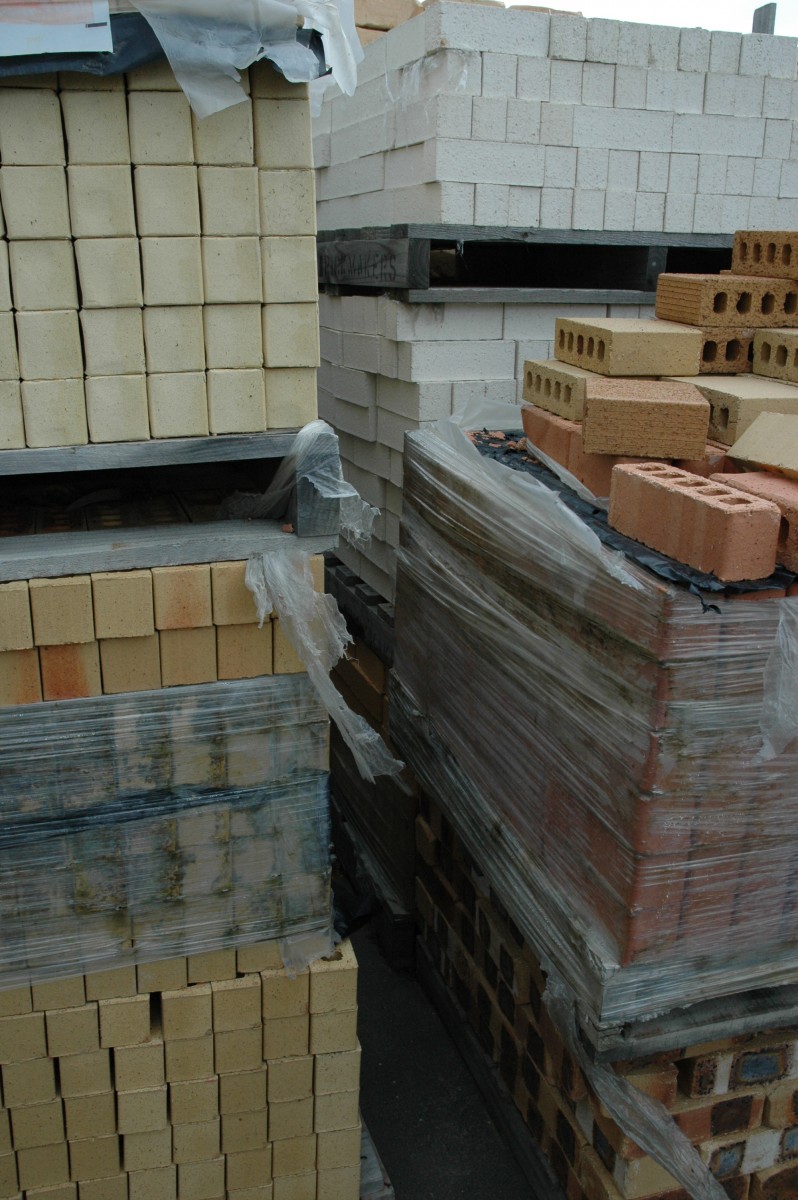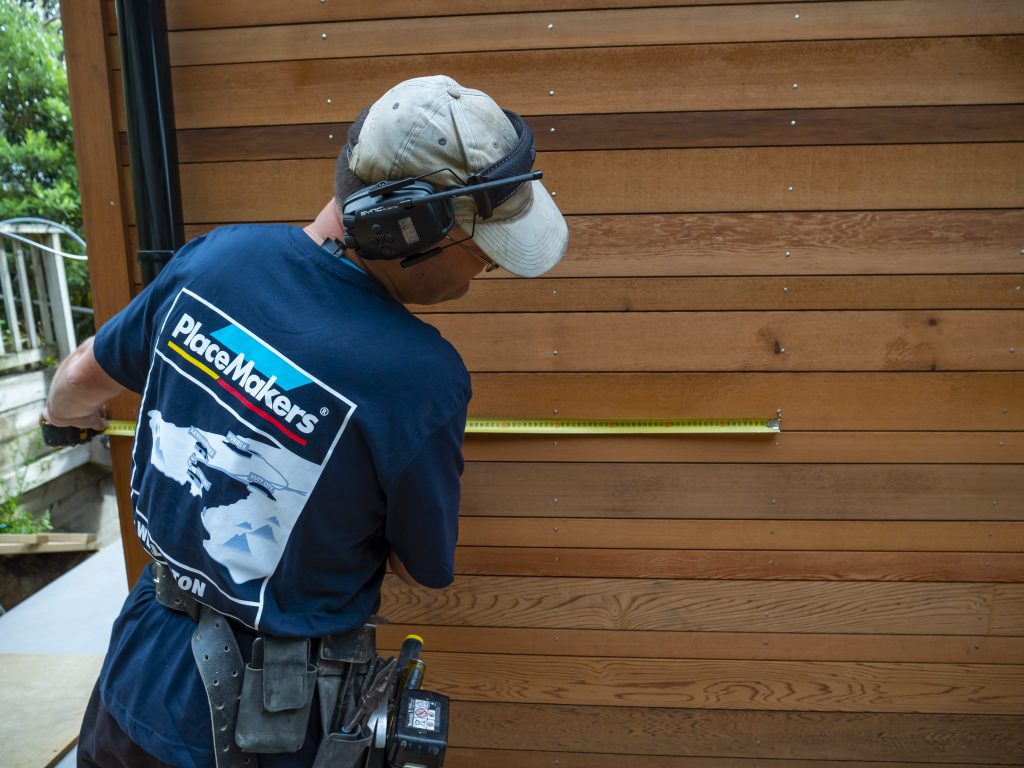MIND YOUR WALL CLADDINGS!
16 Jul 2019, Learn, Prove Your Know How, Technical

Proper on-site management of the wall cladding is critical to delivering quality buildings. This article is part one of a two-part series looking at the storage requirements for different types of wall claddings
Wall claddings are what we see when we approach a building, and any defects from poor handling, storage or installation may be visible. They can also affect the durability of the cladding.
Challenges with storage and handling
Looking after wall claddings during delivery, storage and installation means:
- Planning for deliveries.
- Providing access for delivery vehicles.
- Designating an appropriate storage area where cladding can be stored:
- Wall claddings need to be kept protected and dry before installation.
- Bricks and concrete blocks can be stored on their delivery pallets outside
- Planning for handling, such as lifting and carrying for upper-floor claddings.
- Employing the correct manual handling techniques to distribute materials around the site to their installed location.
Additional challenges when storing and handling cladding materials include:
- Accommodating long lengths – for example, up to 8m long uPVC weatherboards or 12m long profiled metal and flashings.
- Carrying long and relatively floppy sheet materials – additional labour may be required.
- Wind loads on sheet materials stored outside.
- Prefinished materials.
Bricks, concrete blocks and stone
Leave these shrink-wrapped on the pallet until required. Pallets should be lifted onto a flat surface clear of buildings and fences to allow adequate air circulation and give easy access for handling.
They should be hoisted or transported using a pallet jack. Avoid carrying bricks and blocks in a wheelbarrow unless absolutely required.
Fibre-cement sheets and weatherboard
Fibre-cement sheets, weatherboards, planks and trims must be stored laid flat on a smooth level surface with edges protected from chipping.
Timber weatherboards supplied without a primer or sealer coat that will be painted should be coated immediately in dry conditions. This is to seal and minimise the risk of unacceptable water absorption before the product is installed.
Primers used to factory pre-prime timber in New Zealand are typically thin-holding primers designed to provide temporary protection during the building process. The timber must be sanded and primed with a primer.
Sheets and weatherboards should be carried in the vertical position, not flat, to avoid excessive bending.
To ensure optimum performance, store under cover and keep dry prior to fixing. If they become wet, allow to dry thoroughly before fixing. Sheets stored outside are susceptible to wind damage unless securely tied down.
Sheets and weatherboards that will be painted, but are supplied without a primer or sealer coat, should be coated immediately to seal and minimise the risk of unacceptable water absorption before the product is installed.
Primer applied to weatherboards or sheets should not be exposed to the weather for more than 30 to 45 days, depending on the primer. Ideally, the next coat of paint should be applied as quickly as practicable.
Timber weatherboards
Timber weatherboards must be stored laid flat on a smooth level dry surface, clear of concrete slab or timber floors. Store under cover, and on slats to allow air movement. Keep dry prior to fixing. If they become wet, allow to dry thoroughly before fixing.
Timber weatherboards should only be painted when dry and the board is near equilibrium moisture content (MC<16%). H3.1 treated weatherboards and trim require all surfaces to be painted before installation including all holes and notches.
Similar handling and storage practices to those above (for timber weatherboards) can be applied to:
- Timber boards and battens.
- Plywood weatherboards.
- Reconstituted wood weatherboards.
UPVC weatherboards
uPVC weatherboards are delivered plastic wrapped and must be:
- Stored in dry undercover conditions if they are not going to be installed within a few days.
- Stacked flat, clear of the ground with no other materials on top of the planks.
- Supported on bearers at 600mm maximum centres.
- Restrained from collapse.
- Carried on edge, taking care to avoid damage to the plank edges, ends and the weather surface.
Plywood
Flat sheet plywood cladding and rigid air barriers may be treated or untreated.
Untreated plywood is generally dispatched with a moisture content of 8–15%. It will respond to changes in ambient humidity so the eventual moisture content will depend on the environmental conditions. The veneers swell or shrink across the grain in response.
CCA-treated plywood is dried following treatment to an average moisture content of approximately 18%. When handling, carry sheets on edge and locate storage so that sheets will not be exposed to mechanical damage.
When storing plywood, keep dry and protected from sun, rain and wind as rapid changes in temperature and humidity can cause staining, fading and surface checking. Keep the stack clear of the ground in a well-ventilated area. The H3.1 LOSP solvent smell can be quite strong, and venting is recommended until most of the solvent has evaporated.
Stack sheets flat. Support the sheets at both ends and the middle to avoid distortion – align bearers in packs over bearers in packs below. Do not store other materials on the plywood or use it as a platform or table. Secure sheets stored outside against wind uplift.

Fillets used to separate sheets in drying may leave marks on the sheet surface, but these will fade. They can be disguised with paint but may be visible under stain.
Once installed, ensure plywood cladding is below 18% moisture content before installing moisture-sensitive materials, coverings, coatings or adhesives.
Untreated plywood will withstand rain wetting and exposure during construction for up to three months. In high temperatures and high rainfall, this period may be less. Discolouration and face checking of the sheet surface can be expected when exposed for longer periods.
Where the moisture content exceeds 18% for prolonged periods, plywood must be H3.1 LOSP or H3.2 CCAtreated to resist decay or insects.
When coating H3.1 LOSP-treated plywood, there may be traces of residual solvent on the sheet surface from the treatment process. Sheets that are greasy to touch should be placed in a well-ventilated area and allowed to flash off to ensure proper adhesion of paints and stains to the sheet surface.
Reproduced from Build 172 with permission from BRANZ
Register to earn LBP Points Sign in
2 Comments
Leave a Reply
You must be logged in to post a comment.




storage
keep all materials protected